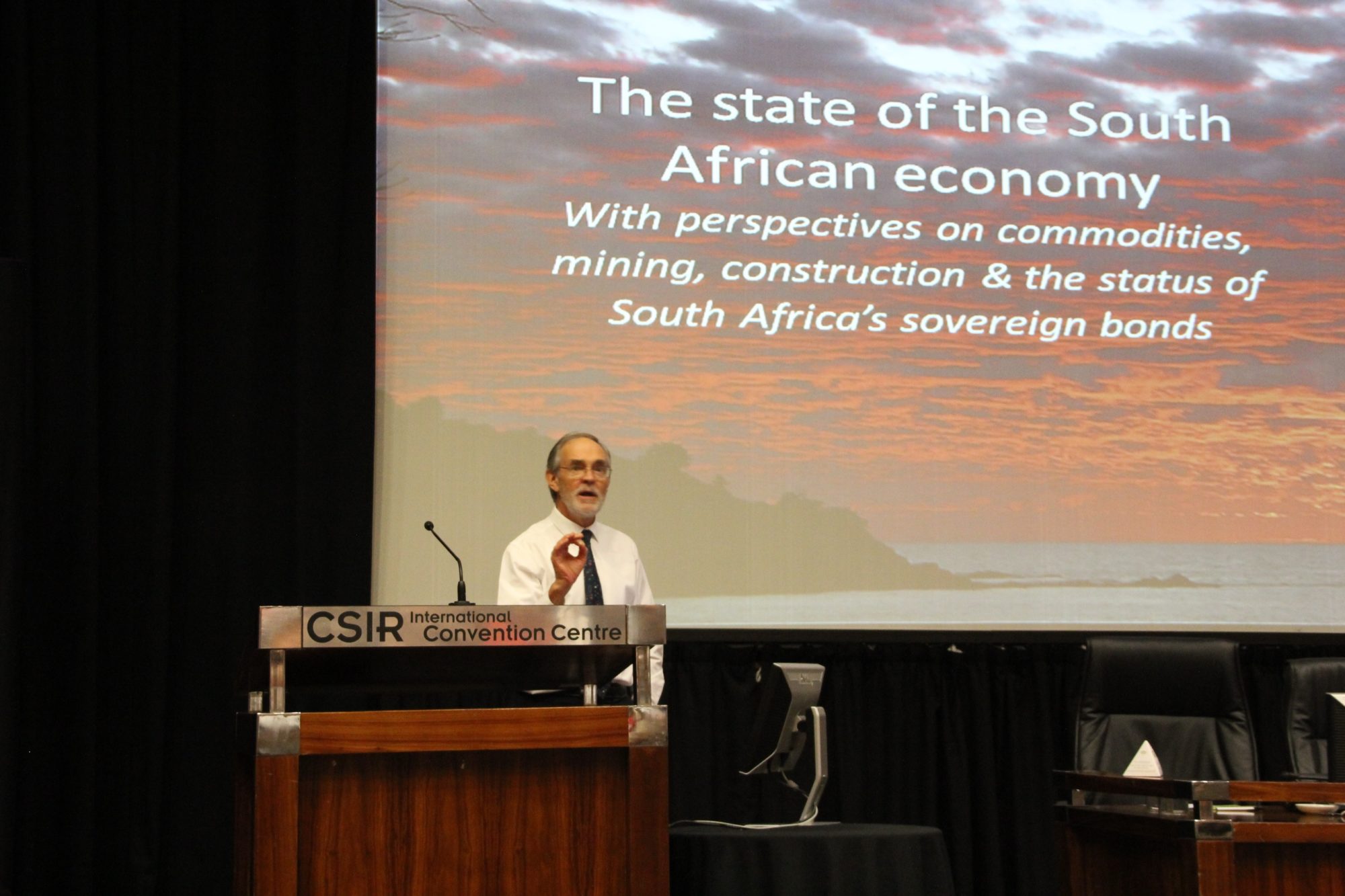There was heartening news for mines and miners at the recent BME Annual Drilling and Blasting Conference in Pretoria – with views that commodity prices may be turning, and news of innovations that will save mines money as they struggle to stay profitable. According to Economist Dr Roelof Botha, the volume of total mining production has this year shown signs of stabilising when compared to 2013 – particularly in terms of platinum and iron ore. “Also, in the first quarter of this year, the demand for gold reached its second-highest quarterly level in history, which is fantastic news,” said Dr Botha. “What is good for gold is, as a rule, good for the South African economy.”
Reflecting on activity in the exploration sector, BME Managing Director Joe Keenan said there were signs that confidence was returning to commodities, and it was unlikely that prices would worsen beyond current levels. However, Keenan suggested that a global economic recovery may still be a couple of years away. Notwithstanding the cyclical difficulties, he said BME – part of the JSE-listed Omnia Group – was still forging ahead in terms of cost-saving innovations and opening up new markets. “BME has become very much an international company, operating in over 23 countries while pursuing business opportunities in large markets like the USA and Canada,” he said. “This year also saw our first delivery of Axxis products to Colombia, and a contract on the
expanding rail system in Singapore.”
The conference focused on technological innovations in the field of blasting that could reduce costs in mining in the short term while improving safety levels and productivity. A key advance was in the employment of emulsions in underground mining; BME in partnership with Gold One’s Modder East mine had implemented the world’s deepest emulsion pipeline, and developed the infrastructure to use emulsion explosives in the narrow-reef environment.
“The system at Modder East is the result of three years of hard work, but we’ve achieved what no-one has accomplished before,” James McArdle, Explosives and Technical Manager at Modder East, told delegates. “While we were already using emulsion explosives in development operations, we took a bold step forward. We have successfully installed and commissioned the world’s first longest drop Rapid Re-Loading Emulsion System of 318 m to underground storage tanks and now leverage its benefits and cost-savings in day-to-day operations.”
Addressing the risk of lightning to mines’ blasting activities, BME technical director Tony Rorke pointed out that, lightning strikes poses significant dangers to South Africa’s opencast mines. Rorke highlighted the potential for especially positive cloud-to-ground (CG) strikes to induce the unplanned detonation of explosives, and outlined the advances made in the second
generation of the Axxis electronic detonation system – Axxis GII™ – to mitigate the risk of lightning-induced initiation.
The cellular phone was another focus of innovation at the conference, with BME Senior Software Developer Nicky Klacar demonstrating the power of mobile applications in drilling and blasting. “Tablets and phones can help monitor aspects of operations – even underground – and improve efficiencies as a result of knowing how well plans were turned into action,” said Klacar. “Even a simple photograph of a drilled round on a stope face – taken with a tablet underground – can provide valuable data to be measured and analysed as part of continuous improvement practices.” She highlighted BME’s Blastlog Reporter, an app through which mine-related data can be stored and presented according to what the user requires, and avoiding a deluge of unnecessary information.
“For an operation to run optimally, staff needs to be aware of anything exceptional that is taking place with production or machinery – or any deviations that indicate a problem somewhere,” she said. “Apps like Blastlog can do this, and even people who are not familiar with computers can use a cell phone.”
The BME conference, held annually for the past 24 years, attracted over 450 delegates from 15 countries including Poland, Singapore, Australia, Canada, United States, the Czech Republic, Zambia and Botswana.











